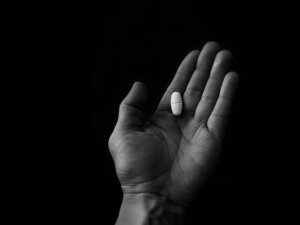World Glaucoma Week (WGW) is a global initiative of the World Glaucoma Association (WGA) and the World Glaucoma Patient Network (WGPN) to raise awareness on glaucoma.
The 2022 WGW is celebrated between March 6-12, and the theme is ‘The world is Bright, Save your Sight’. The theme reflects the hope that with regular testing, people continue to see the world around us: full of beauty, charm, and adventure.
According to a survey by BMC Ophthalmology 2015, the survey indicates that 1.1 to 1.4 million adults in Nigeria have glaucoma, most of whom are not aware that they have the disease. One in every 20 Nigerians aged 40 years and above has glaucoma, and one in five is blind. There are approximately 8,500 people aged 40 years and above with glaucoma per million population.
What is Glaucoma?
Glaucoma is a group of eye diseases that can cause vision loss and blindness by damaging the optic nerve because of an abnormally high intraocular pressure.
Glaucoma is one of the leading causes of irreversible blindness, but with early treatment, the damage may get limited, and sight may be saved. Many forms of glaucoma have no warning signs, the effect is gradual, and you may not notice a change in vision until the condition is at an advanced stage.
Causes of Glaucoma.
According to an article by WebMD 2020, glaucoma mostly affects adults over 40 years of age, but young adults, children, and even infants can also develop it.
The cause of an abnormally high intraocular pressure is unknown, but may include the following risk factors:
- Blocked or restricted drainage in your eye
- Heredity: If you have a family history of glaucoma.
- Medications, such as corticosteroids.
- Poor or reduced blood flow to your optic nerve
- High or elevated blood pressure
- Dilating eye drops
- Increased production of aqueous humor (fluid within the eye)
- Trauma/ injury to the eyes
- Severe eye infection
- Ethnicity / Race: If you are of African American, Irish, Russian, Japanese, Hispanic, Inuit, or Scandinavian descent
- Age: If you are over 40 years of age.
- Myopia or hyperopia.
- Poor vision.
- Chronic Illness i.e., Diabetes, Hypertension, etc.
- Having corneas that are thinner than usual.
TYPES OF GLAUCOMA

SYMPTOMS OF GLAUCOMA.
- Patchy blind spots in your side (peripheral) or central vision, frequently in both eyes
- Tunnel vision in the advanced stages
- Acute angle-closure glaucoma
- Severe headache
- Eye pain
- Nausea and vomiting
- Blurred vision
- Halos around lights
- Eye redness
PREVENTION
- Get regular eye examinations
- Know your family’s eye health history: Glaucoma tends to run in families. If you are at increased risk, you may need frequent eye screening.
- Exercise safely: Regular, moderate exercise may help prevent glaucoma by reducing eye pressure. Talk with your doctor about an appropriate exercise program.
- Take prescribed eye drops regularly. Glaucoma eye drops can significantly reduce the risk that high eye pressure will progress to glaucoma. To be effective, eye drops prescribed by your doctor need to be applied regularly even if you have no symptoms.
- Wear eye protection: Serious eye injuries can lead to glaucoma. Wear eye protection when using power tools or playing high-speed racket sports in enclosed courts.
CONCLUSION
Glaucoma is one of the leading causes of irreversible blindness, as it is not curable, but with medication and/or surgery, it is possible to halt further loss of vision.
Early diagnosis is the first step to preserving your vision because everyone is at risk for glaucoma. Most people with glaucoma have no early symptoms or pain, hence, a regular eye check-up is key.










